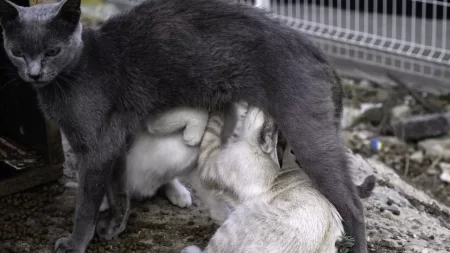No, cats should not eat chocolate. Chocolate contains theobromine and caffeine, which are toxic to cats. Theobromine is a stimulant that can cause vomiting, diarrhea, increased thirst and urination, restlessness, panting, muscle tremors, seizures, and even death in cats. Caffeine can also cause these symptoms, as well as an increased heart rate and blood pressure.
The amount of chocolate that is toxic to a cat depends on the type of chocolate, the amount eaten, and the cat’s size. Dark chocolate and baking chocolate are the most toxic types of chocolate, as they contain the highest levels of theobromine. Milk chocolate is less toxic, but it can still be harmful to cats. White chocolate contains the least amount of theobromine, but it can still cause stomach upset in cats.
Why is Chocolate Bad for Cats?
Chocolate contains two main ingredients that make it toxic to cats:
Toxic ingredients
Theobromine and caffeine are two naturally occurring chemicals found in chocolate, called methylxanthines. When eaten by cats, these substances are metabolized much more slowly than in humans, allowing them to build up to toxic levels in the body. Just a few ounces of milk chocolate can poison a 5-pound cat.
Darker chocolates contain higher levels of methylxanthines. Baking chocolate and dry cocoa powder are extremely toxic, while milk chocolate and chocolate syrup aren’t as dangerous. White chocolate does not contain any methylxanthines.
Cats’ inability to digest chocolate
Cats lack the enzymes needed to properly digest chocolate. As it passes undigested through the cat’s gastrointestinal tract, the methylxanthines are absorbed at high concentrations.
This slow buildup allows chocolate’s toxic effects to persist and worsen in cats. Any amount, no matter how small, poses a risk.
Signs and Symptoms of Chocolate Poisoning
Eating chocolate affects cats in different ways depending on the amount consumed. Symptoms may appear within 6 to 12 hours and can last up to 72 hours.
Vomiting and diarrhea
One of the first signs of chocolate poisoning in cats is gastrointestinal upset. A cat may vomit, have diarrhea, or show signs of an upset stomach after eating chocolate.
Increased heart rate
The methylxanthines in chocolate stimulate the nervous system and quicken a cat’s heart rate. Their heart may beat faster than normal.
Seizures
High doses of chocolate can cause potentially life-threatening symptoms like tremors, muscle rigidity, and seizures. Seizures indicate emergency medical care is needed.
What to Do if Your Cat Eats Chocolate?
If you suspect your cat has eaten any amount of chocolate, take action immediately:
Call your vet immediately
Contact your veterinarian or Pet Poison Helpline. They can advise you based on the type and amount eaten. Vomiting may be induced if done shortly after ingestion.
Monitor your cat’s symptoms
Watch for signs of vomiting, diarrhea, increased heart rate, hyperactivity, or seizures. Contact your vet if symptoms persist or worsen.
Prevent them from eating more chocolate
Make sure your cat cannot access any more chocolate. Confine them if needed. Bring any packaging to the vet for identification.
Alternatives to Chocolate for Cats
Chocolate should be avoided, but there are safe, cat-friendly treats you can offer instead:
Safe and healthy treats for cats
Consider treats specifically formulated for cats, like freeze-dried meat or fish. Stick to plain, unseasoned options.
Limiting sugary and fatty foods in their diet
Treats with high fat or sugar content aren’t ideal either. Focus on healthy proteins and limit junk food.
Discuss any dietary changes with your vet
Check with your veterinarian before significantly changing your cat’s diet. They can advise you on appropriate treats and safe portion sizes.
The bottom line is chocolate and cocoa products should never be fed to cats. Chocolate contains toxic substances that cats’ bodies cannot properly digest. Even small amounts can cause dangerous poisoning symptoms requiring immediate veterinary treatment. Sticking to cat-safe treats and foods is the healthiest approach.







